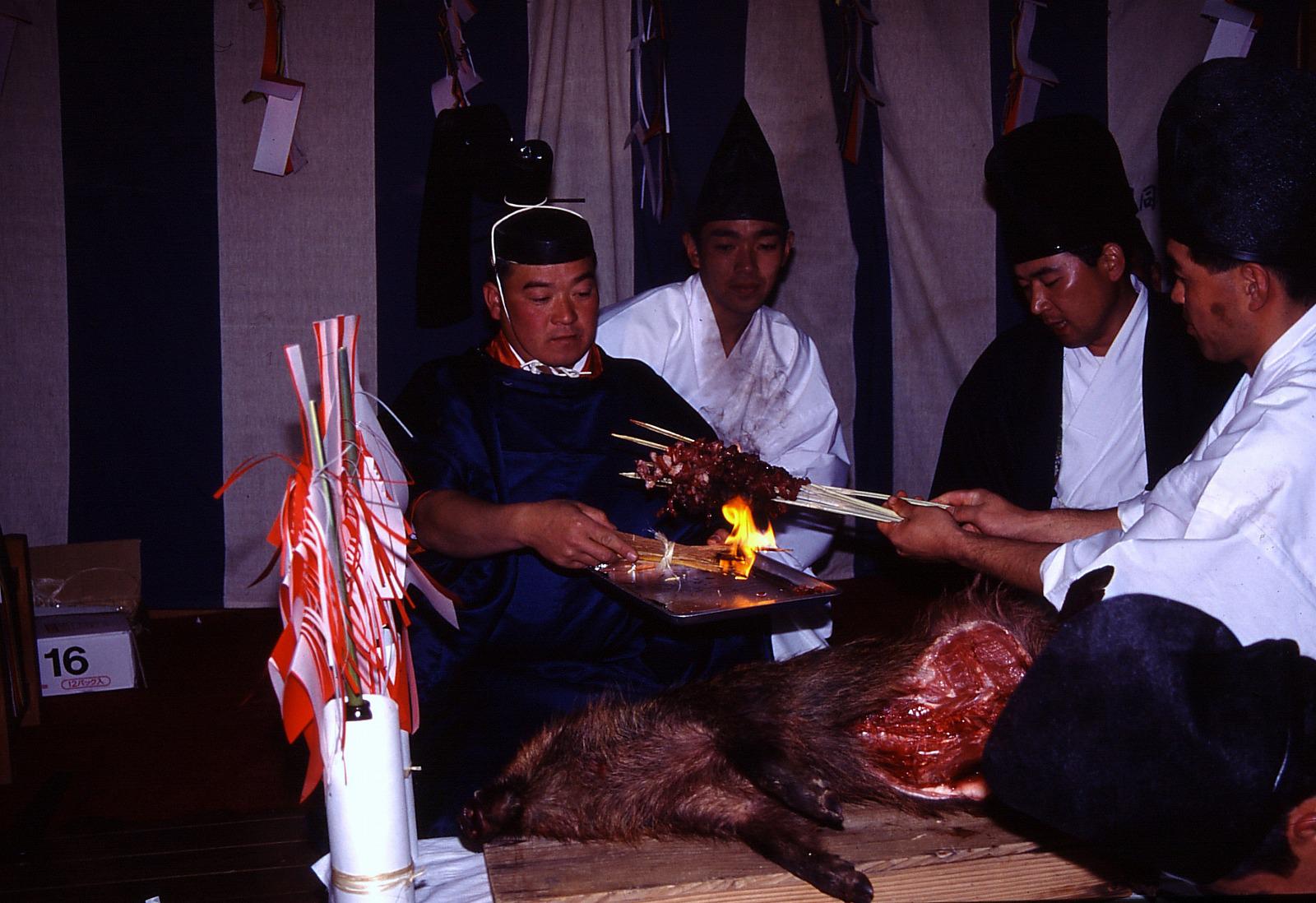狩猟生活と神楽 について
In Shiiba, it is customary to dedicate a kagura inn when a boar or deer is caught for kagura. The first performance of the kagura, 'ita-awake', is a ritual performed using the chopping board, knives and small knives used in the preparation of the kagura. After the dedication of the boar and deer, the meat is cut on the chopping board and eaten by all the celebrants (dancers) after a chanting called Shokyo. In Omae, a ritual called shishimatsuri is held before the 'ita yokake', in which a boar is offered to the gods, the hunter chants an incantation, the entrails are removed and seven pieces of meat are then skewered. In Okochi, there is a kagura called 'boar dance', in which a boar mask and a hunter appear. The hunter uses a wooden staff as a gun and acts out the chase of the boar. In the 'Mori' dance in the Mukoyama area, in which bows and arrows are used, the hunters are said to act out the chase of a deer. In the neighbouring village of Morozuka to the east, Yaenohira, on 15 January, the day before the mountain god festival, there is a Kagura dance called 'Moriyama', in which one dancer holds a bow and arrow and another a firearm. In Ginmagami, Saito City, and Ushiotake, Kitago Town, in the prefecture, there are dedications to wild boars, and in Ginmagami in particular there is a kagura called Shishitogiri, in which a hunter performs a shishigari (a ritual in which a hunted animal is killed by a hunter). The mountain kagura in Shiiba and other parts of Miyazaki Prefecture are rich in hunting folklore and retain valuable elements from all over the country.



